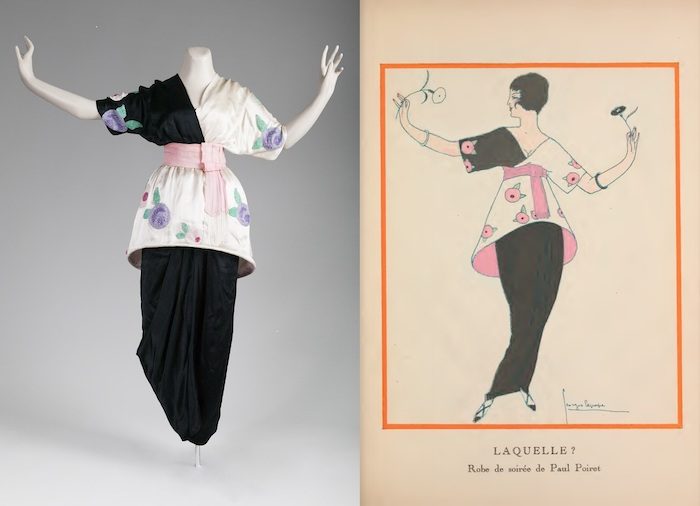Nicknamed the “The King of Fashion,” Paul Poiret was known for turning nineteenth-century couture tradition on its head and ushering in the modern era of garment design. Born on April 20, 1879, in Paris, he is notable for using Asian, Eastern European, and North African design elements, emphasizing draping rather than tailoring, and moving away from petticoats and corsets—returning to a natural waistline.
All of this resulted in new, exciting, and liberating shapes, such as the “lampshade” tunic silhouette of the Sorbet evening gown (1913). Today, only three examples of this dress exist, and CHM’s version is the only one that follows the original sketch featured in the 1913 Gazette du Bon Ton.
Of course, such a remarkable gown would come to the Museum’s Costume and Textiles Collection with a fantastic backstory. It was owned and donated by Anita Carolyn Blair, the granddaughter of the founder of Merchants National Bank. She wore the Sorbet dress to a debutante ball in Chicago in 1913. Blair’s bold and possibly scandalous choice would have certainly stood out in a room full of corseted dresses, upstaging everyone else. See it up close.

CHM, ICHi-063292. Gazette du Bon Ton courtesy of the Smithsonian Libraries.
With more than 50,000 costumes and textiles dating from the eighteenth century to the present, the Museum’s world-renowned Costume and Textiles collection is noted for both its size and the quality of its holdings. A selection of objects are viewable online, such as Abraham Lincoln’s top hat, Michael Jordan’s shoes, and Bertha Honoré Palmer’s couture gowns. Explore the collection.